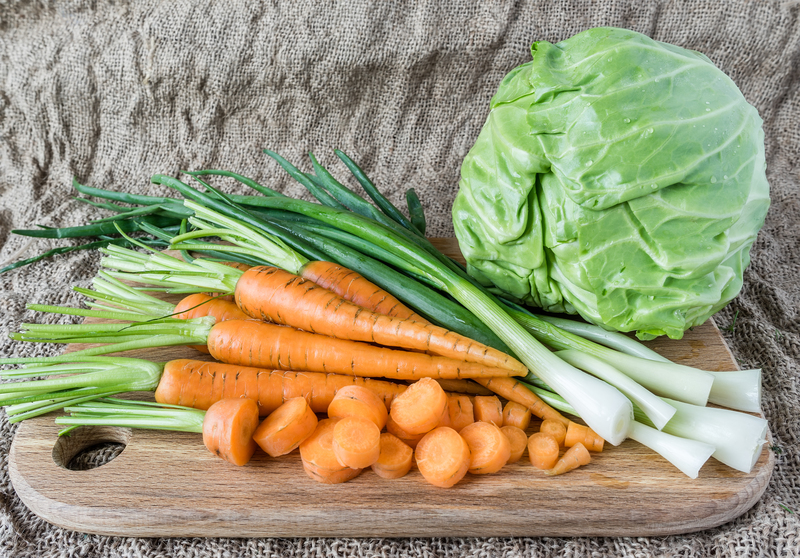Breathe New Life into Your Space with a Serene Herb Garden
Posted on 15/09/2025

Breathe New Life into Your Space with a Serene Herb Garden
Are you looking to transform your living area into a tranquil oasis? Discover how cultivating a serene herb garden can rejuvenate your home, uplift your mood, and ignite your culinary creativity. Whether you're a seasoned gardener or a green-fingered beginner, building a personal herb sanctuary brings a touch of nature indoors and delivers an abundance of fresh flavors to your table. This comprehensive guide explores unique ideas, practical tips, and the amazing benefits of breathing new life into your space with an indoor herb garden.
- Why Create a Serene Herb Garden?
- The Remarkable Benefits of Growing Herbs
- Choosing the Right Herbs for Your Garden
- Designing a Serene and Functional Herb Garden
- Tips for Caring and Maintaining Herbs
- Creative Herb Garden Ideas to Inspire You
- Herb Gardens for Small Spaces and Apartments
- Harvesting and Using Your Fresh Herbs
- Conclusion: Embrace Tranquility with Your Herb Haven
Why Create a Serene Herb Garden?
Creating a serene herb garden at home is more than just a design trend. In a world swamped with digital screens, busy schedules, and stressful commutes, a personal green corner can offer a much-needed sanctuary for relaxation and rejuvenation. Indoor gardens, especially those adorned with aromatic herbs, bring a sense of vitality, peace, and connection to nature.
- Escape the everyday grind with lush, calming greenery.
- Enjoy the natural beauty and soothing scents of fresh herbs.
- Enhance air quality and infuse your home with a tranquil ambiance.
The Remarkable Benefits of Growing Herbs Indoors
There's a reason why the serene herb garden is cherished globally. Cultivating your own herbs isn't just good for your pantry--it promotes mental and physical wellness and boosts your interior's style. Here's why you should consider breathing new life into your home with a verdant herb retreat:
1. Improved Indoor Air Quality
Many common herbs act as natural air purifiers, absorbing toxins and releasing oxygen to help you breathe easier. Basil, mint, and rosemary are particularly effective, making your space healthier and more refreshing.
2. Stress Reduction and Mindfulness
The gentle routine of watering, pruning, and tending to your indoor herb garden can foster mindfulness. Studies show that contact with greenery reduces anxiety, improves mood, and encourages relaxation.
3. Fresh Flavors at Your Fingertips
Imagine snipping fresh basil for your pasta or mint for your mojito right from your kitchen. A herb garden revitalizes your meals, inspiring healthier cooking and adding nutrients to your diet.
4. Decorative Appeal and Aroma
Herbs are visually pleasing, with diverse leaf shapes and lush, green hues. Their subtle fragrances--think lemon balm or lavender--infuse your room with natural aromas, replacing the need for artificial air fresheners.
5. Sustainability and Savings
Home-grown herbs are both eco-friendly and cost-effective. By growing your own, you cut down on packaging waste and regular grocery expenses.
Choosing the Right Herbs for Your Serene Garden
Not all herbs thrive indoors, and some complement each other better than others. When planning your tranquil herb garden, consider these popular, easy-to-grow options:
- Basil: Loves sunlight, ideal for bright windowsills.
- Mint: Hardy and aromatic, excellent for freshening air.
- Parsley: Grows well in indirect light, adds a lush green texture.
- Chives: Compact, low-maintenance, perfect for limited space.
- Rosemary: Woody and robust, brings a Mediterranean scent indoors.
- Thyme: Thrives with lots of sunlight and well-drained soil.
- Cilantro: Fast-growing and brightens up windowsills with delicate leaves.
- Oregano, Lemon Balm, or Sage: Add unique flavors and fragrances.
Tip: Most herbs need a minimum of 4-6 hours of sunlight each day. Consider your home's natural light before choosing which varieties to grow.
Designing a Serene and Functional Herb Garden
Crafting a serene herb oasis goes beyond simply placing pots on a windowsill. The arrangement, choice of containers, and integration with your home's decor all play a role in cultivating tranquility. Here's how to design a garden that harmonizes beauty with functionality:
1. Selecting the Perfect Location
Choose a spot that receives plenty of natural sunlight. South- or west-facing windows are ideal. In low-light conditions, supplement with LED grow lights to ensure your herbs thrive year-round.
2. Choosing Stylish Containers
Elevate your herb garden's look with decorative pots, hanging baskets, or a tiered planter. Opt for containers with drainage holes to prevent root rot. For a cohesive vibe, match pot colors and styles to your room's theme.
3. Creating a Sense of Serenity
- Mix heights and leaf types for an organic, layered appearance.
- Incorporate natural elements like stones or moss for added Zen.
- Arrange herbs in geometric patterns for symmetry and calm.
Add a personal touch--decorative signs, pebbles, or small statuettes can reflect your unique style.
4. Embracing Vertical Space
If space is tight, consider vertical herb gardens using mounted planters, pallet walls, or stacked pots. These not only save space but add visual height and drama to your interior.
Essential Care Tips for a Flourishing Herb Garden
To keep your indoor herb garden lush and thriving, follow these expert care guidelines:
- Sunlight: Ensure your herbs get at least 4-6 hours of light per day.
- Watering: Water thoroughly but let soil dry between sessions; avoid letting roots sit in water.
- Pruning: Regularly snip leaves to encourage bushy growth and prevent flowering.
- Soil: Use a well-draining, nutrient-rich potting mix formulated for edible plants.
- Fertilizer: Feed monthly with an organic fertilizer for healthy, fragrant leaves.
- Pest Control: Keep an eye out for pests like aphids. Use neem oil or mild soapy water if needed.
Remember: Herbs can be sensitive to climate. Avoid placing them near air conditioners or heating vents.
Creative Herb Garden Ideas to Inspire Your Space
Take your serene herb garden to the next level with these creative and easy-to-implement ideas:
1. Hanging Herb Gardens
Suspend small pots from a sturdy rod in your kitchen window. This method maximizes light exposure and adds whimsical charm.
2. Mason Jar Herb Planters
Recycle glass jars as quirky herb containers. Arrange in a row or hang on a rustic board for a farmhouse feel.
3. Tea Cup Herb Collection
Plant petite herbs like thyme or chives in vintage tea cups for a dainty table centerpiece.
4. Tiered Ladder Garden
Repurpose an old wooden ladder and place herb pots on each rung for a vertical display.
5. Living Herb Wall
Create a wall-mounted "pocket" system to keep favorite herbs within easy reach and make a dramatic visual statement.
6. Window Sill Arrangement
Group pots of varying heights along your sunniest windowsill for a burst of greenery and instant kitchen decor upgrade.
Herb Gardens for Small Spaces and Apartments
Lack of a backyard? No problem! Apartment herb gardens are the epitome of compact serenity. Here are key strategies for success:
- Stackable Planters: Use vertical planters to maximize floor space.
- Railings and Balconies: Attach railing planters or hanging baskets to balconies for ample sunlight exposure.
- Wall-mounted Racks: Install simple shelves along your kitchen wall for easy access to fresh herbs.
Tip: Choose fast-growing, low-maintenance herbs like basil, chives, and parsley for the best results in small spaces.
Harvesting and Using Your Abundant, Fresh Herbs
Once your herb garden is thriving, it's time to reap the rewards. Here's how to harvest and use your herbs for maximum flavor and freshness:
When to Harvest
Pick leaves in the morning, after the dew has evaporated but before the sun is intense. This ensures the highest oil content for robust flavor.
How to Harvest
- Use sharp scissors to snip leaves or stems just above a growth node.
- Never remove more than 1/3 of a plant at a time; this keeps it thriving.
- Pinch off any flowers to maintain flavor and encourage more leaves.
Creative Ways to Use Fresh Herbs
- Add to salads, soups, and pasta for a nutrient boost.
- Infuse oils or vinegars for gourmet flavors.
- Blend into smoothies for a fresh, aromatic touch.
- Make herbal teas with mint, lemon balm, or chamomile.
- Create homemade herb butters and marinades for grilling.
Preserve excess herbs by freezing in oil, air-drying, or creating flavorful pestos and blends.
Conclusion: Embrace Tranquility with Your Own Serene Herb Garden
There's no better way to breathe new life into your space than by welcoming a serene herb garden into your home. Beyond the instant upgrade to your decor, you'll benefit from improved air quality, soothing aromas, and a daily sense of accomplishment. Bringing nature indoors fosters mindfulness and harmony--let the calming beauty of fresh herbs transform your home and wellbeing.
Start small or dream big--every leaf cultivated is a step towards a more serene, vibrant lifestyle. Your personal herb garden awaits!


